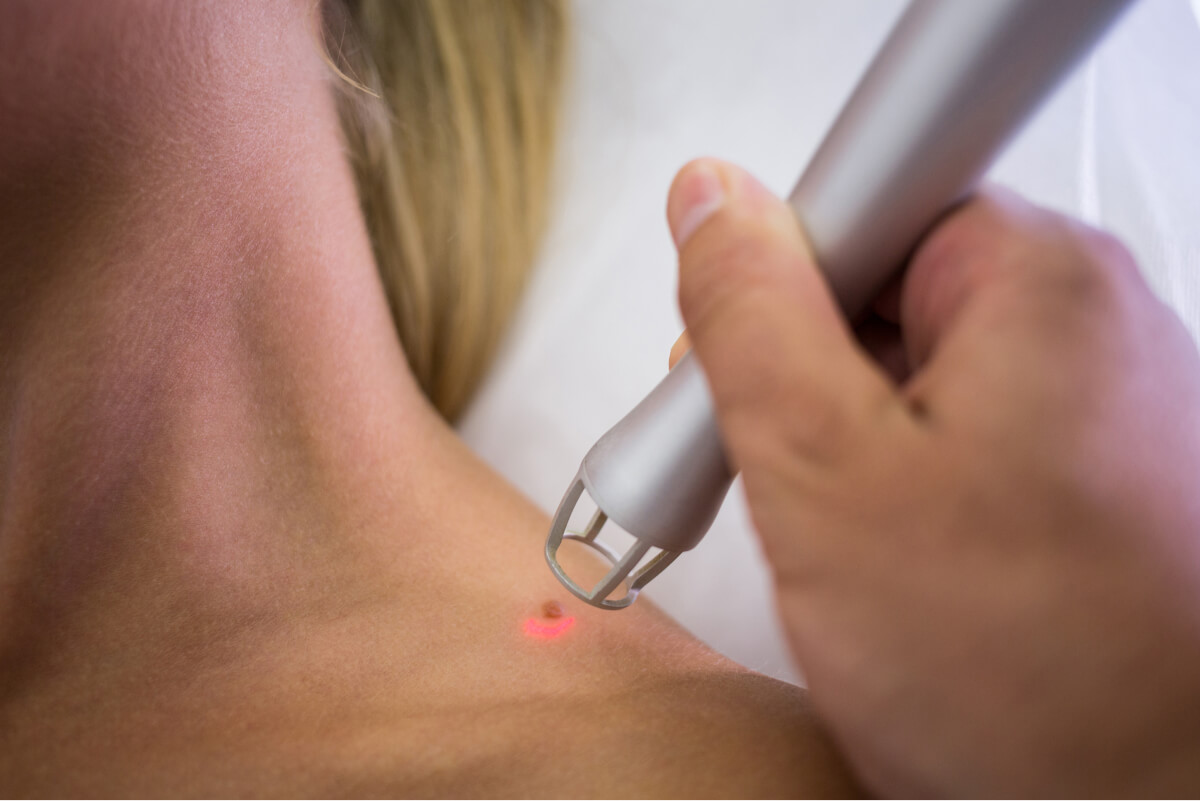Mole Removal: What You Need to Know
- Medically reviewed by Dr Larry Wu. MBBS (Sydney) , MRCS (Edinburgh) , MMED (Singapore)

What Is Mole Removal?
Mole removal is a surgical procedure to remove a mole completely. This procedure is typically performed if there’s suspicion of skin cancer, specifically melanoma. However, it can also be done for aesthetic purposes.
How Can Moles Be Removed?
There are different methods to remove moles, depending on the type and size of the mole.
Electrosurgery (Cauterisation)
Electrosurgery or cauterisation is performed using specialised medical devices to generate heat or electrical energy to ‘burn’ off skin lesions and tissues.
This precise and controlled procedure generally does not leave any significant scars; however, there is a small risk of recurrence of the growth as some pigmented skin cells may remain under the skin.
Laser
Laser removal is recommended for small and flat moles that are not suspected of being cancerous (malignant). It’s a minimally invasive procedure that utilises specialised laser technology to break down the mole pigment without destroying the surrounding skin tissues.
Although this method typically does not leave scars, there is still a chance of recurrence due to underlying pigmented skin cells, which may remain.
Surgical Excision
Surgical excision is a gold standard procedure to remove raised moles, particularly those suspected of being cancerous.
During the surgery, your skin specialist will administer local anaesthesia before using a scalpel to remove the mole, along with a small amount of surrounding skin to remove the pigment cells completely. As such, the risk of recurrence is extremely low.
The removed mole will then be sent for analysis to confirm whether it’s cancerous.
Difference Between Mole Removal and Mole Biopsy
Both mole removal and mole biopsy are closely related as they involve extracting the mole (partially or entirely), but they are actually different procedures (depending on the intended goal).
A mole biopsy is conducted to analyse small samples of your mole to determine if they are cancerous or not. This is done by shaving off a small portion of your mole as well as the surrounding skin.
On the other hand, a mole removal surgery is typically performed to completely excise your mole, especially if it has been confirmed to be cancerous. Additionally, some of the surrounding skin may also be removed.
What to Expect Before, During and After Mole Removal?
Preparing for Mole Removal
A physical examination and consultation will be conducted before a mole removal. Your dermatologist will examine your skin and mole to check for abnormalities such as bleeding or irregular borders.
They may also review your medical history, and you can raise any concerns that you may have during this session.
Furthermore, specific instructions may be given to you before the day of surgery, such as avoiding sun exposure or wearing any makeup.
During the Procedure
During the mole removal process, your dermatologist will first administer local anaesthesia before removing your mole by excising or burning, depending on the type of mole removal procedure.
A small tingling sensation or slight pressure may be felt during the process, but the discomfort experienced should be minimal.
After the procedure, stitches and bandages may be applied to aid the healing process.
After-Care
You may be required to return for a follow-up examination to ensure that there are no unintended side effects and that the area is healing well.
During the recovery period, you may experience minimal scarring, formation of scabs or slight tenderness at the original mole location. These symptoms are completely normal and should subside after a week or so.
An experienced dermatologist in Singapore may also provide instructions on how to care for your skin, such as applying antibiotic creams to the affected area and cleaning your wound to promote healing. Additionally, you may be required to avoid exposure to sun and water as well to prevent irritation.
Related Articles
START TODAY
Make An Enquiry With Dr Larry Wu
Prefer to talk? Call us directly to chat with our friendly clinic staff at +65 6274 6858
GET UPDATED
Related Articles
ICARE Medical and Wellness Clinic
Block 22 Havelock Road #01-701
Singapore 160022